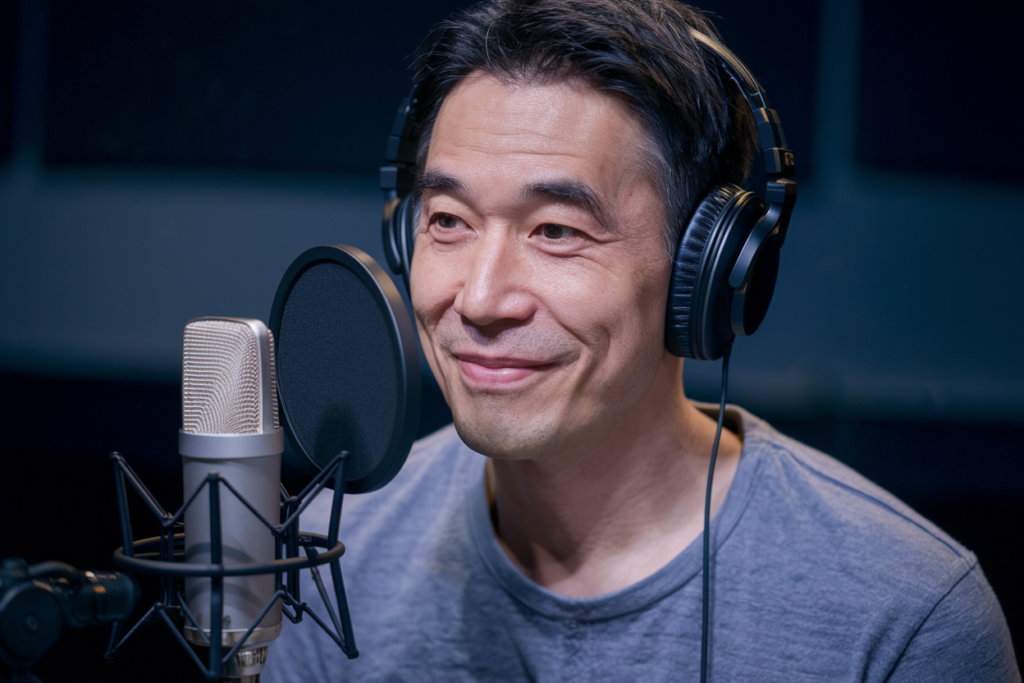Key Takeaways
- Cultural Nuances Matter: Understanding cultural differences is essential for effective localization, as humor and societal norms vary significantly between Japan and other regions.
- Language Barriers Present Challenges: The unique structure of the Japanese language can complicate translations, making it important to convey not just words but also tone and context.
- Voiceover Adaptation is Crucial: Selecting appropriate voice talent ensures characters retain their essence while effectively resonating with international audiences through accurate emotional delivery.
- Technical Hurdles Impact Quality: Issues such as software limitations and format discrepancies can hinder the localization process, affecting viewer immersion and overall content quality.
- Audience Expectations Shape Localization Strategies: Understanding target demographics and their preferences helps tailor adaptations to meet audience expectations while maintaining authenticity.
- Collaboration Enhances Effectiveness: Engaging native speakers and implementing feedback loops throughout the localization process improves accuracy, cultural relevance, and audience engagement.
Ever wondered why some Japanese media just doesn’t hit the mark when it’s localized? The problems localizing Japanese media can be tricky, and they often leave fans feeling disconnected from their favorite shows, games, or comics.
Overview of Japanese Media Localization
Japanese media localization involves adapting content from Japan for international audiences, ensuring cultural relevance and accessibility. This process encompasses various forms of media, including anime, video games, and manga. Each type presents its own unique challenges.
Cultural Nuances
Cultural differences often complicate localization efforts. Humor that resonates with Japanese audiences may not translate well due to varying social norms and values. For example, jokes based on wordplay can lose their impact when translated literally. Understanding these nuances is crucial for creating engaging content.
Language Barriers
Language barriers present another significant challenge in localization. Japanese language structure differs greatly from English and other languages, affecting sentence construction and meaning. Translators must find a balance between literal translation and conveying the intended message effectively.
Voiceover Adaptation
Voiceover adaptation plays a pivotal role in bringing localized content to life. Selecting suitable voice talent ensures characters resonate with new audiences while maintaining their original essence. Voice artists must capture emotions accurately to preserve the narrative’s integrity.
Audience Expectations
Audience expectations also influence localization strategies. Fans often prefer authentic experiences that reflect the original work’s tone and style. Striking this balance requires careful consideration during translation and voiceover processes.
These challenges highlight the complexities involved in localizing Japanese media, emphasizing the importance of skilled professionals who understand both cultural context and linguistic intricacies.
Cultural Differences and Their Impact
Cultural differences play a significant role in the localization of Japanese media. Localization isn’t just about translating words; it’s about capturing the essence of the original content while making it relatable to new audiences.
Language Nuances
Language nuances present unique challenges during localization. The Japanese language incorporates various levels of politeness and context-specific expressions, which often don’t have direct English equivalents. For instance, jokes or idiomatic phrases may lose their humor or meaning when translated directly. Adapting these nuances requires skilled translators who can rephrase content without losing its original charm. It’s essential to convey not just what characters say but how they say it, maintaining their personality traits—something voice actors must also consider during performance.
Societal Context
Societal context significantly influences how narratives unfold in Japanese media. Concepts such as family dynamics, social hierarchy, and cultural traditions shape character interactions and storylines. These themes might not resonate with Western viewers unfamiliar with them, leading to potential misunderstandings or disinterest. Localization efforts must carefully weave these societal elements into the narrative so that international audiences grasp underlying messages without feeling alienated. Skilled voice talent plays an essential role here by bringing depth to characters through tone and delivery, ensuring that cultural subtleties come across effectively.
Understanding these cultural differences enhances your media experience, allowing for a more authentic connection with stories from Japan while appreciating the artistry involved in their localization process.
Technical Challenges in Localization
Localization of Japanese media presents various technical challenges that impact quality and audience engagement. Addressing these hurdles ensures a more authentic experience for international viewers.
Software Limitations
Software used for localization often lacks support for specific Japanese characters or formats, leading to potential errors during translation. Many tools struggle with context-sensitive translations, which can result in misinterpretation of phrases or cultural references. When adapting content like video games or anime, software must handle intricate voiceover elements effectively. For instance, timing synchronization between visuals and audio becomes crucial when integrating voiceovers into localized versions. Inadequate software capabilities may hinder the ability to match lip movements with translated dialogue, impacting the overall immersion of the viewer.
Format Issues
Format issues arise frequently when localizing Japanese media due to differences in text length and structure. Japanese language often conveys meaning with fewer words than English, which can lead to overflow problems in subtitles or on-screen text. Additionally, graphics containing embedded text might require reworking to accommodate translated content without losing visual appeal. This challenge extends beyond simple translation; it includes ensuring that voiceover scripts fit seamlessly within the original narrative while maintaining character integrity. Adapting format requires meticulous attention to detail—every element counts in creating a polished final product that resonates well with audiences from different cultures.
By recognizing these technical challenges early on, you can enhance your localization efforts and deliver engaging experiences that truly reflect the essence of Japanese media.
Market and Audience Considerations
Understanding market and audience considerations is vital for successful localization of Japanese media. You must grasp the demographics, preferences, and expectations of your target audience to create engaging content.
Target Demographics
Target demographics vary widely depending on the type of media being localized. Anime fans may range from teenagers to adults who appreciate diverse genres, while video game audiences often include younger players looking for immersive experiences. Each group has distinct tastes, influences, and cultural backgrounds that shape their reception of localized content.
You need to pay attention to regional differences as well. For instance, a series popular in Japan might not have the same appeal in North America or Europe without thoughtful adaptation. Capturing humor, social norms, and character traits accurately ensures that you cater effectively to these different audiences.
Distribution Channels
Selecting appropriate distribution channels significantly impacts the reach of localized media. Streaming platforms dominate anime accessibility in many markets, while gaming relies heavily on console services or digital storefronts. Each channel presents unique challenges that affect how voiceovers are integrated into the final product.
You must consider how each platform’s user interface impacts subtitles or voiceover integration too; subtitling must align with visual elements like timing and pacing for an optimal viewer experience. Understanding these distribution nuances helps tailor your approach for maximum engagement across various formats.
By focusing on these market considerations—target demographics and distribution channels—you can enhance your localization projects’ effectiveness while ensuring they resonate with international audiences eager to connect with authentic Japanese stories.
Best Practices for Effective Localization
Effective localization requires a strategic approach that ensures your content resonates with international audiences. Emphasizing cultural relevance, clarity, and technical precision leads to successful adaptations of Japanese media.
Collaboration with Native Speakers
Collaboration boosts the quality of localized content. Engaging native speakers not only enhances translation accuracy but also provides insights into cultural context. Native speakers grasp subtle nuances in language and humor that outsiders might miss. Their input can guide decisions on voiceover styles, ensuring character emotions translate well while maintaining authenticity.
Iterative Feedback Processes
Implementing iterative feedback processes fosters improvement throughout localization projects. Gathering feedback from both target audiences and localization experts helps identify areas needing refinement. This cycle of review ensures that translations align with audience expectations while preserving the original work’s essence. Involving voice talent in these discussions can further enhance character portrayal, making sure their performances resonate effectively with viewers.
By focusing on collaboration and feedback, you set the groundwork for a successful localization process that respects the original content while engaging new audiences effectively.
Conclusion
Navigating the complexities of localizing Japanese media is no small feat. It requires a deep understanding of cultural nuances language differences and audience expectations. Each element plays a crucial role in ensuring that the essence of original content remains intact while making it relatable to new viewers.
By prioritizing collaboration with native speakers and embracing feedback loops you can enhance the localization process. This not only respects the artistry behind Japanese media but also creates engaging experiences for international audiences. Ultimately successful localization fosters a meaningful connection between diverse viewers and authentic Japanese stories enriching their appreciation of this unique cultural landscape.
Frequently Asked Questions
What is Japanese media localization?
Localization of Japanese media involves adapting anime, video games, and manga for international audiences. This process ensures cultural relevance while maintaining the original essence of the content.
Why do some localized Japanese shows fail to resonate with audiences?
Localized content can struggle due to cultural differences, humor translation issues, and language barriers. If these elements are not effectively adapted, they may disconnect from audience expectations.
What are the main challenges in translating Japanese media?
Key challenges include cultural nuances, language structure differences, humor translation, and voiceover adaptation. These factors can complicate achieving an authentic experience for international viewers.
How important is collaboration in the localization process?
Collaboration with native speakers is crucial as it enhances translation accuracy and helps capture subtle cultural nuances. Their insights ensure that local adaptations resonate well with target audiences.
What role does technology play in media localization?
Technology impacts quality through software limitations affecting context-sensitive translations and timing synchronization in voiceovers. Effective tools are essential for creating a polished final product that engages viewers.
How do audience demographics affect localization efforts?
Understanding audience demographics helps tailor content to match preferences and expectations. Different age groups and cultures have diverse tastes that must be considered during localization projects.
Why is feedback important in localization projects?
Implementing iterative feedback processes allows for continuous improvement based on audience reactions and expert insights. This leads to better adaptations that honor the original work while engaging new viewers effectively.
What best practices should be followed for effective localization?
Best practices include collaborating with native speakers, focusing on cultural context, implementing feedback loops, and paying attention to detail throughout all stages of the localization process.







